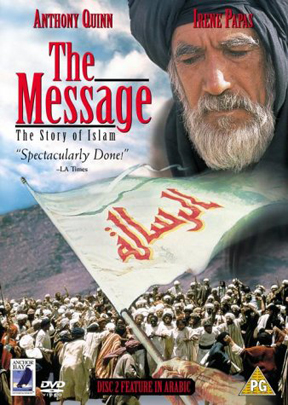
Muslim Cinema: an introduction
With 101 must-see Muslim-themed films
Javed Mohammed, Culture Wars, March 11
The Muslim World and Cinema
Every culture promotes its history, beliefs, heroes, values, norms, and attitude. The African-American director Spike Lee said about his films, ‘I’m just trying to tell a good story and make thought-provoking, entertaining films. I just try and draw upon the great culture we have as a people, from music, novels, the streets’. Is there a parallel to African-American, Asian, or Latin cinema, called ‘Muslim Cinema’? Does it exist, and if so, how can it be understood? Before one can understand the cinema of a people, a little more light needs to be shed on the actual people.
The Muslim world, with approximately one fifth of the world population and in turn its politics, economics, and culture, plays a very important role on the world stage. Headline news is the most popular venue promoting what is known about Muslims, so it becomes imperative for Muslims to be seen and heard from other vantage points. One of these vistas is art, and in the present world Cinema, due its mass appeal and significant availability. An introduction to Muslim Cinema allows Muslims to take a critical reflection about their own beliefs and culture, as well as providing a window for those who are of other faiths to see who Muslims are. Where does one start?
Some countries like the US, Japan, France and India have a strong arts culture, and an affinity or presence to the medium of film. The Muslim world does not easily fit in this category, so how else can it be viewed. Besides providing entertainment, film can present a window to the economic, social or moral challenges of society. There are volumes of books on world cinema, regional cinema (e.g. Arab Cinema), and national cinema of Muslim-majority countries that have a cinema and history like Egyptian or Turkish cinema. However, ‘Muslim Cinema’ is not a known entity. This introduction to the subject is at best like the Indian story of a group of blind men feeling different parts of an elephant, trying to determine what an Elephant is like. Maybe this introduction is its tusk or tail, but it is a starting point for discourse.
The Muslim world, although perceived as one entity, is not monolithic. It is made up of different regions, countries, states and communities. And although religion is the basic underlying theme, each region comes with its own differentiating culture. There are over 1.4 Billion Muslims in the world represented in 48 Muslim majority countries from Morocco to Malaysia.
There are also a large minority of Muslims in many countries including the US, UK France, Germany, Russia, China, and India. Although ‘Muslim countries’ have Muslim majority populations, they also represent people of other faiths. With so many Muslims spanning the globe, there are hundreds of cultures, languages and dialects. With such diversity, there is no easily definable commonality other than faith which can describe ‘Muslim Cinema.’ So what is Islamic or Muslim Cinema?
As these terms are not defined, the following are working definitions: ‘Islamic Cinema is film that conforms to Islamic laws, customs and values.’ This one represents a high ideal, and due to the vagaries of film it is a sensitive and difficult subject to address. Any art-form, by its very nature, is subjective. Alternatively, then: ‘Muslim Cinema is a film movement by or about Muslims’ affords a wider perspective. This paper focuses on the latter. It is a discourse on belief and culture, politics and perception. It is not meant to proselyte or promote religion. It provides a platform to provide social commentary and social criticism. In some areas, it ties into the global social justice movement and highlights common humanity, the universal language of freedom and love.
For the full article and list of films, click here.